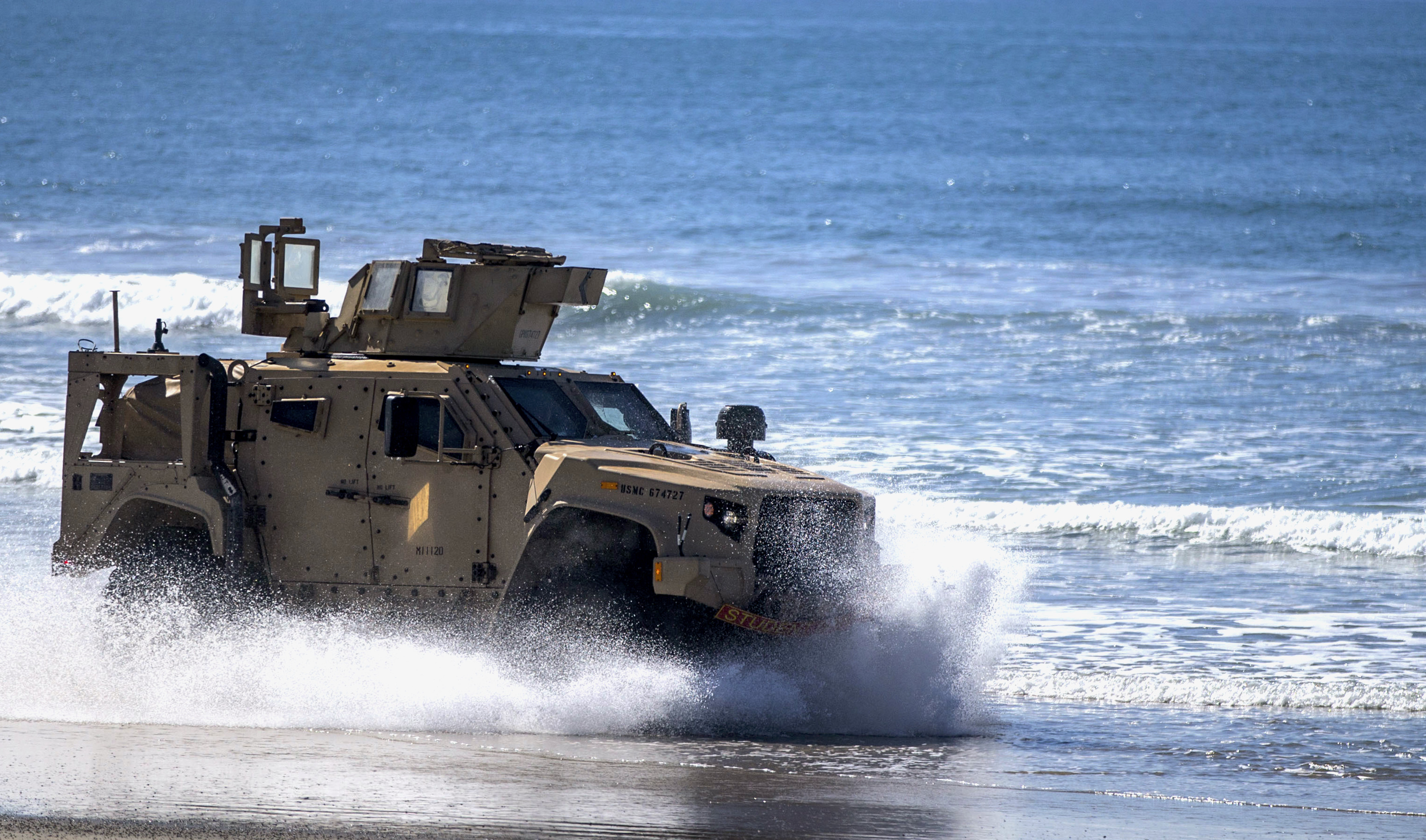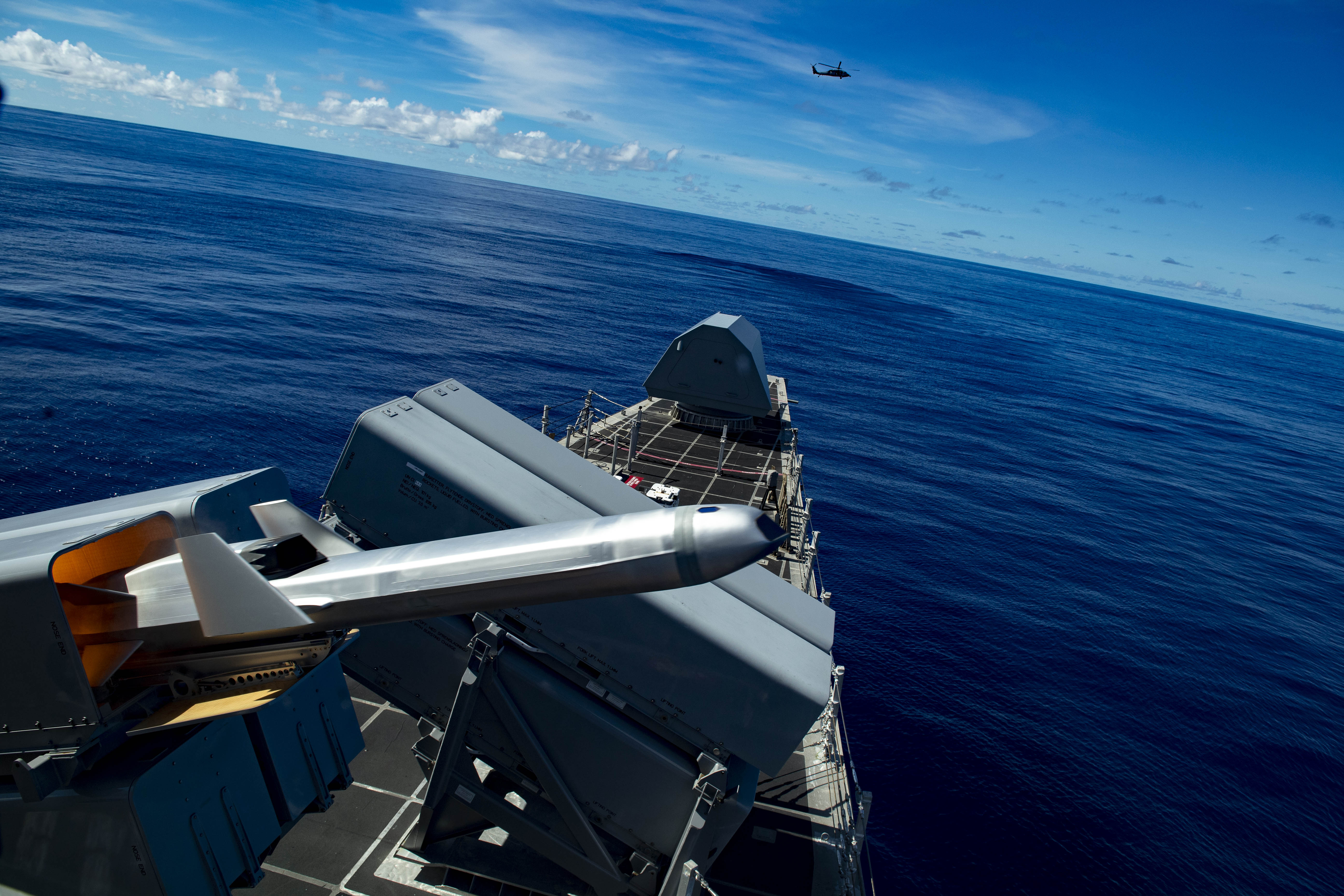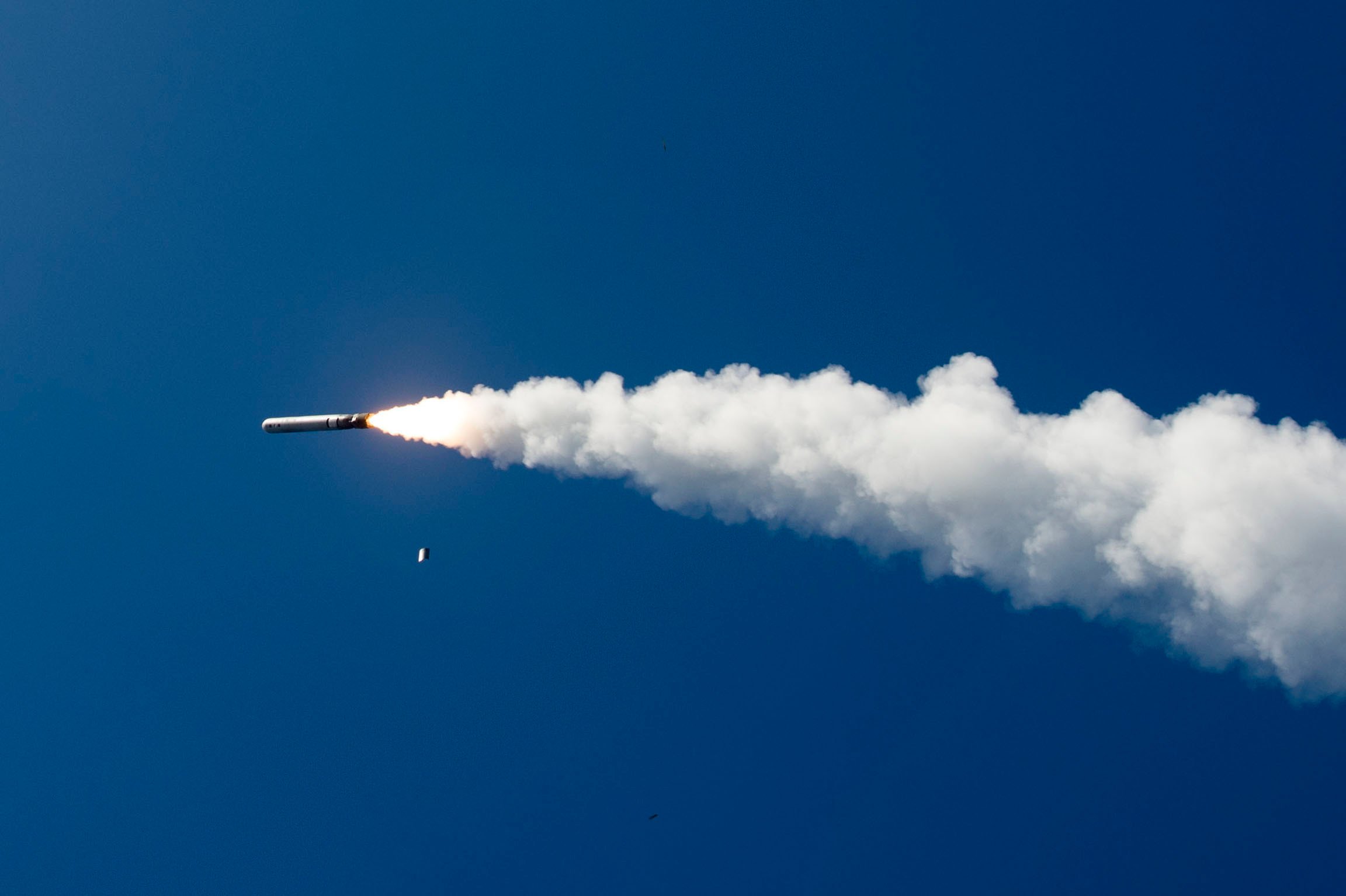
CAPITOL HILL – Navy and Marine Corps leaders are confident a pair of ground-based anti-ship missile programs in support of the Expeditionary Advance Base Operations (EABO) concept is leaving China “just scratching their head” trying to figure out how to counter U.S. naval force advancements.
For a near-term solution to gain the ability to control the seas from ashore, the Marines will pair the Naval Strike Missile – the same anti-ship missile going on the Littoral Combat Ships to boost their own lethality – with an unmanned Joint Light Tactical Vehicle with a launcher on top. For what could ultimately provide greater range but will take more time for development, the Marines are also pursuing a ground-launched cruise missile that could end up being the Maritime Strike Tomahawk launched from atop the JLTV.
Navy acquisition chief James Geurts and Marine Corps Deputy Commandant for Combat Development and Integration Lt. Gen. Eric Smith outlined this portfolio of lethal capabilities in a hearing today with the Senate Armed Services seapower committee.
To boost the lethality of the more than 21,000 Marines operating west of the international date line, many of whom are inside the first island chain near China, Smith said “our number-one current Unfunded Priority List item is the ground-based anti-ship missile, which is the Naval Strike Missile.”
Smith told the subcommittee that the Marine Corps included some money in its Fiscal Year 2021 budget request for this project, but the Marine Corps is increasingly confident it can accelerate fielding this capability if Congress boosts its budget for the upcoming fiscal year.
Asked by Sen. Mazie Hirono (D-Hawaii) why this top initiative is on the Unfunded Priorities List rather than in the budget request itself, Smith said, “some of it, ma’am, was marked. And some of it is, we now have the capability after a successful test demonstration in December to actually go forward.”
In December the Marines shot a “slug” or inert round off the top of a JLTV to prove the missile could launch in that manner, and the test was successful. This effort is similar to work that was done with Lockheed’s Hellfire air-to-surface missile when the Navy wanted to put it on LCSs – the missile’s effectiveness was already proven, but testing needed to confirm that it could get going from a vertical launch off a ship deck instead of a horizontal launch from under an aircraft in flight.
Smith said it was too late to affect the FY 2021 budget by the time they conducted the first test in December, but the positive results from that slug test and the expected positive results from a live missile test in June give the Marines hope they can accelerate their procurement plans.
“We have to plan for success, and I believe we’re going to have it in June. When that happens, I’ll be able to accelerate the procurement of about 36 of these missiles by a year, from ‘23 to ‘22; that allows me to field this capability much faster than I otherwise would have,” the general told the subcommittee.
Geurts told USNI News after the hearing that Marine Corps Systems Command is working with the Program Executive Office for Integrated Warfare Systems to leverage each others’ testing with the Naval Strike Missile to ensure they aren’t wasting money and time on redundant tests.

“What we’re doing is trying to structure that test program so we’re demonstrating unique things where we need to – i.e., now I can initialize a missile correctly on a ground vehicle and get it into flight – but then take advantage for the whole community, any missile that flies provides data for everybody,” he said.
“So initially, if you think about a ground vehicle, it’s really proving that an existing missile can launch from the launcher, that was the previous test. Now it’s really, can you put it in the right state, condition state, and initialize it, give it all the right data, all that, so that when it goes flying it’s starting in the right condition,” he said of the upcoming June test in California.
For this particular effort, Smith and Geurts said speed to the fleet was most important.
“For us trying to field a capability rapidly, to show that (Commandant Gen. David) Berger’s planning guidance has the teeth that it does, we’ll pair that missile which is existing now with a JLTV – we called it a ROGUE (Remotely Operated Ground Unit Expeditionary) Fires Vehicle, a robotic vehicle – we’ll pair that immediately,” Smith said.
In the longer term, the Ground-Launched Cruise Missile (GLCM) would bring even greater range. That cruise missile “ideally can be fired off of that same platform” if the ROGUE Fires Vehicle proves to be useful, Smith added.
Smith said these two programs, along with Army missiles that have even greater ranges but are less mobile and therefore not suited for the Marines’ EABO operations with dispersed small units, would provide a layered offensive capability to hold enemy ships at risk throughout the Pacific theater.
Berger said in a separate hearing last week that the Marines’ first steps on GLCM would be to experiment with the Tomahawk missile and see if they could come up with a launching system that would work, and that their ultimate plans for the GLCM would be based on those prototyping results.
Smith said during today’s hearing that the Marines’ marching orders from the Office of the Secretary of Defense on the ground-launched cruise missile project were to move quickly. The Navy already fields the Tomahawk land-attack missile and is developing a Maritime Strike Tomahawk missile, but launching these cruise missiles from ashore would have been banned under the Intermediate-Range Nuclear Forces Treaty, which the U.S. recently left. With the military now legally freed up to test and field this capability, Smith said this would prove to be another useful tool for forward-deployed Marines.

The ground-launched cruise missile would “reach out hundreds of miles to place ships at risk. It can’t be something very short – hundreds of miles, because if you look at the expanse of the Pacific, our current issue, and Sen. Hirono raised it – it being, we would say outsticked in range by the opponent, which we cannot allow. If the opponent can reach me at 1,000 miles and I can reach at less than 1,000 miles, that is highly problematic for a force who doesn’t live inside the weapons – we operate inside the weapons engagement zone, but are not permanently large based, if you will, inside that,” Smith said.
More broadly, Smith said during the hearing, “We’re often asked, what are Marines doing with an anti-ship missile? And the response for us is actually fairly simple: we are the littoral combat force present within the Pacific and specifically in the first island chain, and as that force we already can fire with our coordination with the Army off of the High-Mobility Artillery Rocket System, HIMARS. We can fire an Army ATacMS (Army Tactical Missile System) missile that goes out a couple hundred miles. It makes sense to us that any force that is the littoral combat force should have a weapons system that can place a threat on an enemy ship.”
With the Naval Strike Missile capability coming to the fleet as soon as 2022 and the Tomahawk capability on the way as well, Smith added, “that capability causes any threat to have to take a step back and consider that there are potently dozens of these forces scattered throughout the Pacific. Means that the sea lanes in support of Distributed Maritime Operations are no longer free and open for them.”
“I’m confident our enemy is just scratching their head with this portfolio, saying, what are these guys up to next? What new problem do I have to go solve I didn’t even know I had?” Geurts told USNI News after the hearing.
“I want them worrying about what we’re doing, not us worrying about what they’re doing.”





